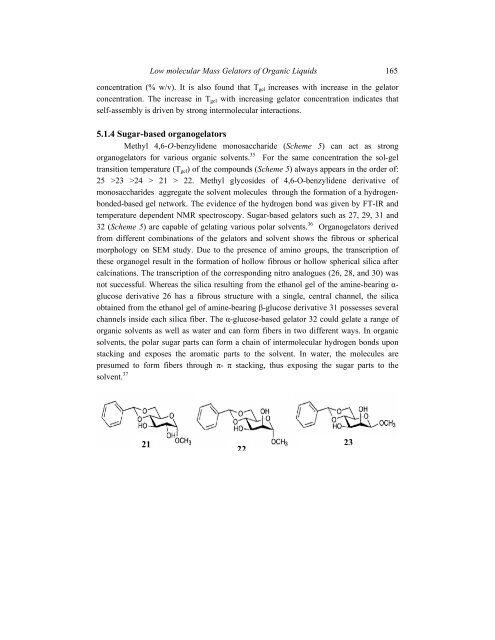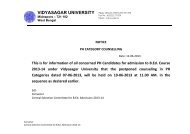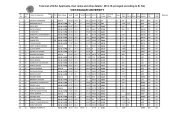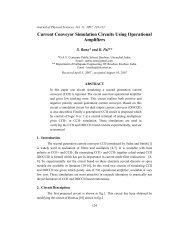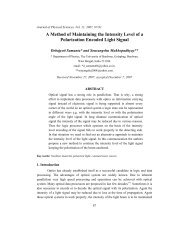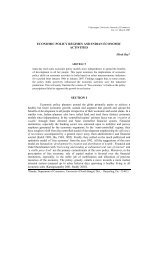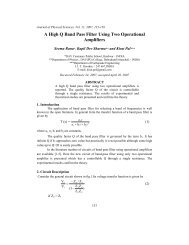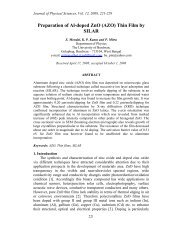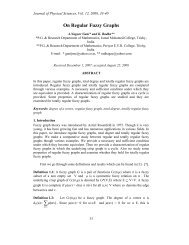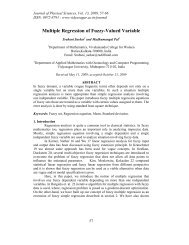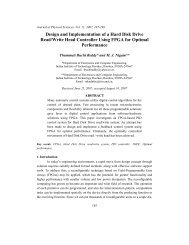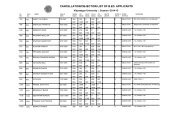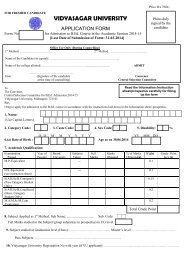Low Molecular Mass Gelators of Organic Liquids - Vidyasagar ...
Low Molecular Mass Gelators of Organic Liquids - Vidyasagar ...
Low Molecular Mass Gelators of Organic Liquids - Vidyasagar ...
You also want an ePaper? Increase the reach of your titles
YUMPU automatically turns print PDFs into web optimized ePapers that Google loves.
<strong>Low</strong> molecular <strong>Mass</strong> <strong>Gelators</strong> <strong>of</strong> <strong>Organic</strong> <strong>Liquids</strong> 165<br />
concentration (% w/v). It is also found that T gel increases with increase in the gelator<br />
concentration. The increase in T gel with increasing gelator concentration indicates that<br />
self-assembly is driven by strong intermolecular interactions.<br />
5.1.4 Sugar-based organogelators<br />
Methyl 4,6-O-benzylidene monosaccharide (Scheme 5) can act as strong<br />
organogelators for various organic solvents. 35 For the same concentration the sol-gel<br />
transition temperature (T gel ) <strong>of</strong> the compounds (Scheme 5) always appears in the order <strong>of</strong>:<br />
25 >23 >24 > 21 > 22. Methyl glycosides <strong>of</strong> 4,6-O-benzylidene derivative <strong>of</strong><br />
monosaccharides aggregate the solvent molecules through the formation <strong>of</strong> a hydrogenbonded-based<br />
gel network. The evidence <strong>of</strong> the hydrogen bond was given by FT-IR and<br />
temperature dependent NMR spectroscopy. Sugar-based gelators such as 27, 29, 31 and<br />
32 (Scheme 5) are capable <strong>of</strong> gelating various polar solvents. 36 Organogelators derived<br />
from different combinations <strong>of</strong> the gelators and solvent shows the fibrous or spherical<br />
morphology on SEM study. Due to the presence <strong>of</strong> amino groups, the transcription <strong>of</strong><br />
these organogel result in the formation <strong>of</strong> hollow fibrous or hollow spherical silica after<br />
calcinations. The transcription <strong>of</strong> the corresponding nitro analogues (26, 28, and 30) was<br />
not successful. Whereas the silica resulting from the ethanol gel <strong>of</strong> the amine-bearing α-<br />
glucose derivative 26 has a fibrous structure with a single, central channel, the silica<br />
obtained from the ethanol gel <strong>of</strong> amine-bearing β-glucose derivative 31 possesses several<br />
channels inside each silica fiber. The α-glucose-based gelator 32 could gelate a range <strong>of</strong><br />
organic solvents as well as water and can form fibers in two different ways. In organic<br />
solvents, the polar sugar parts can form a chain <strong>of</strong> intermolecular hydrogen bonds upon<br />
stacking and exposes the aromatic parts to the solvent. In water, the molecules are<br />
presumed to form fibers through π- π stacking, thus exposing the sugar parts to the<br />
solvent. 37 21<br />
22<br />
23


